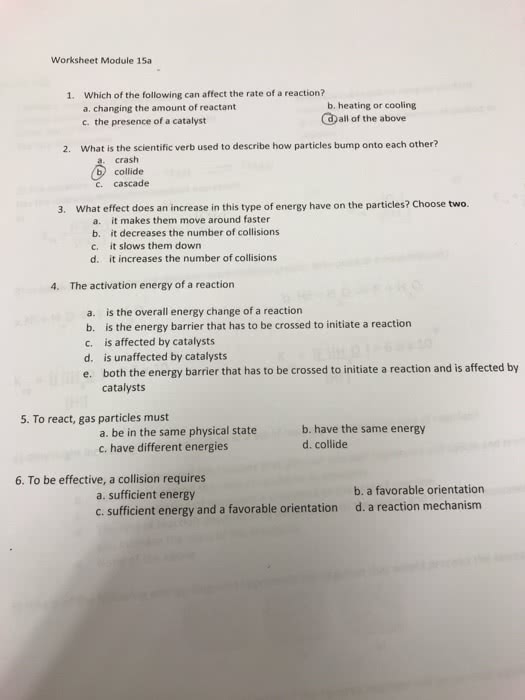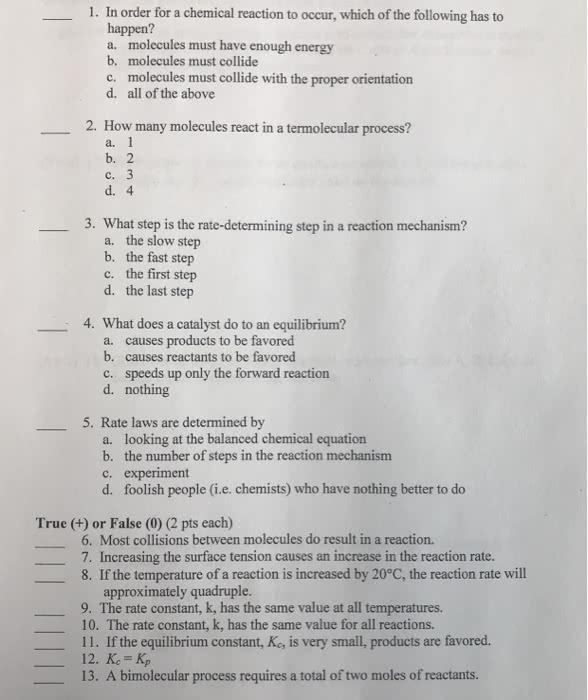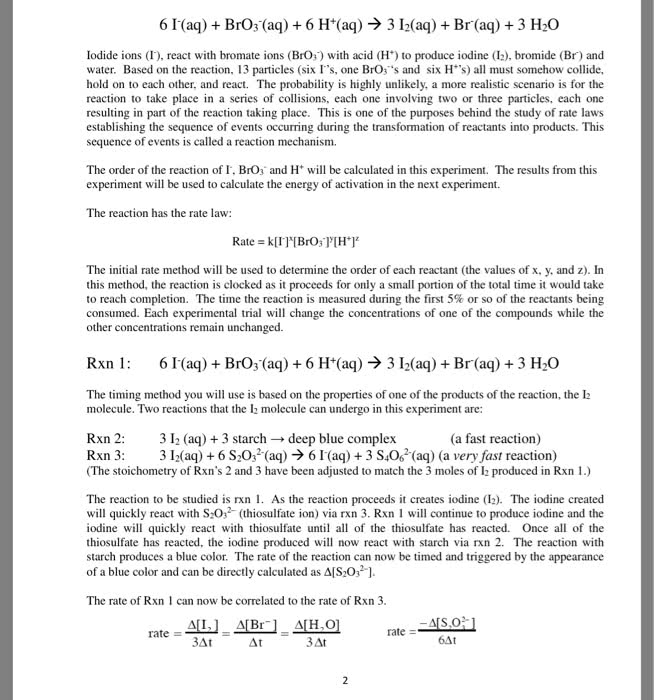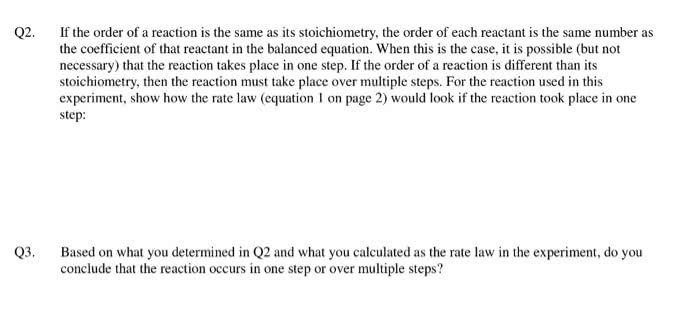CHEM 102 Lecture 15: Chem Ch 15
Document Summary
Fast rate: large fraction of particles react. Slow rate: small fraction of particles react. In terms of the reactant: the negative of the change in concentration divided by the change in time. Reaction rate depends on: concentration, greater amount = faster rate, temperature, kinetic energy and reaction rate will increase when temp increases. Increase rate of reaction but not consumed by reaction: activation energy is smaller so the reaction occurs quicker. The rate at any point in time. Rate = (cid:1863)[(cid:1827)] (cid:3041) k = constant of proportionality (rate constant) n = reaction order. Only determined by experiment via initial rates (running reaction many times w/ different initial concentrations. Relates rate of reaction to concentration of reaction. Concentration decreases w/ time so the rate slows down faster: rate is proportional to the square of the concentration, rate increases as concentration increases (cid:1863)[(cid:1827)] (cid:1863)[(cid:1827)] (cid:2869) (cid:2870) When concentration increases, rate is the same. M is the reaction order for a.





